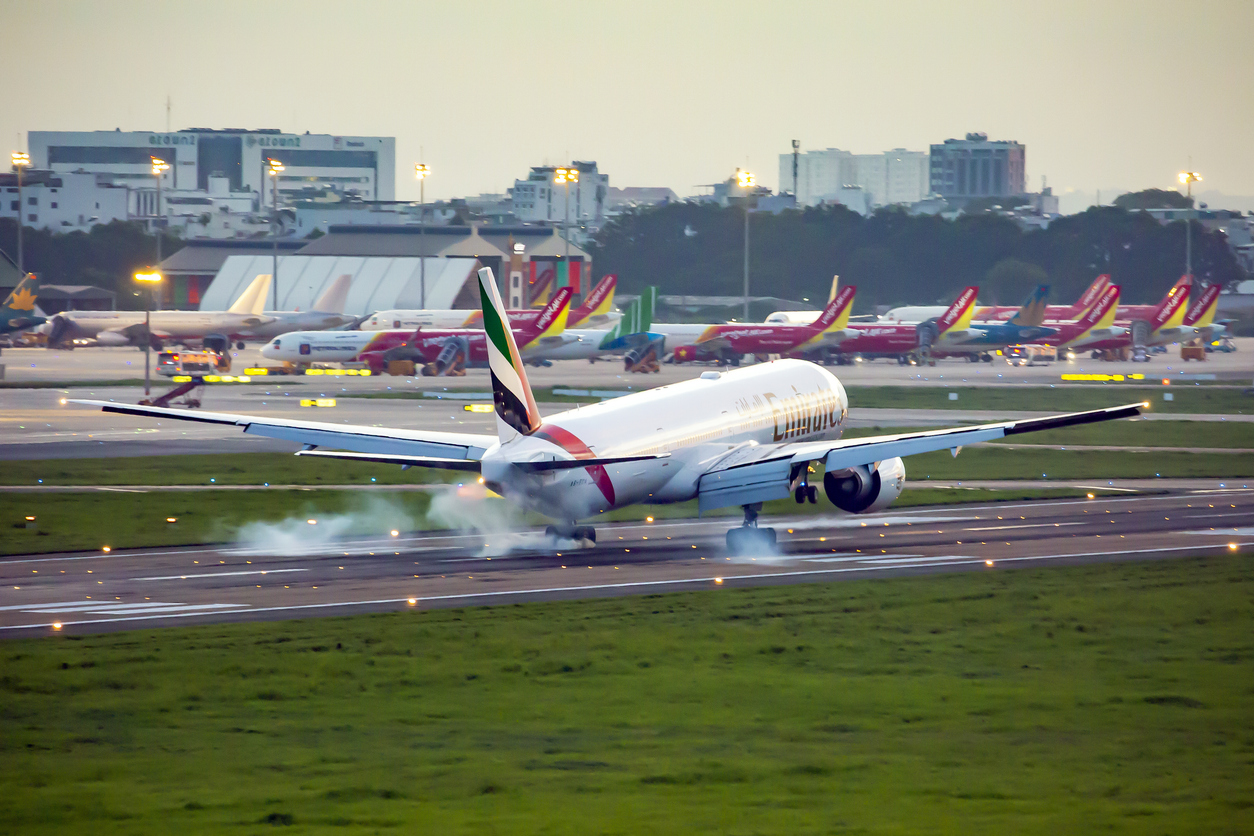Have you ever wondered about the seemingly cryptic numbers and letters painted on airport runways? These markings, known as runway designators and threshold markings, play a vital role in ensuring the safety and efficiency of air traffic. This article delves into the world of runway markings, explaining what they mean and how they are used by pilots.
Understanding Runway Designators
Imagine standing at the beginning of a runway, ready to take off. The runway designator, a two-digit number, tells you the magnetic heading you’ll use for takeoff or landing on that specific runway. This number is derived from the runway’s centerline, with north being designated as 36 and south as 18. For example, a runway with a centerline aligned at a magnetic azimuth of 153 degrees would be designated as runway 15.
Join us on TELEGRAM for the Latest Aviation Updates fresh to your phone.
If a runway is used for takeoffs and landings in both directions, it essentially functions as two separate runways. To avoid confusion, each direction is assigned its own designator. The difference between the two designators for a bidirectional runway is always 18. For instance, if one end of the runway is designated as 12, the other end will be 30.
Parallel Runways and Designation Letters:
Airports with multiple parallel runways add another layer of complexity. Here, a letter suffix is introduced alongside the runway designator number to differentiate between the parallel runways. Imagine yourself standing at the threshold (beginning) of a runway. The letter “L” designates the runway to your left, “R” for the right, and “C” for the center runway (if there are three). For example, at an airport with two east-facing parallel runways, they might be designated as 09L and 09R. The opposite ends of these runways would then be 27R and 27L, respectively.

Things get slightly more intricate with four or more parallel runways. In these cases, some runways are designated based on the closest whole number to their magnetic azimuth, while adjacent runways are designated based on the next closest whole number. For instance, a group of four parallel runways facing north could be designated as 36L, 36R, 35L, and 35R.

The suffix letter assigned to each parallel runway follows a specific order, ensuring clear identification:
- Two runways: L and R
- Three runways: L, C, and R
- Four runways: L, R, L, and R
- Five runways (two options): L, C, R, L, R or L, R, L, C, R
- Six runways: L, C, R, L, C, R
Threshold Markings: The Starting Point
The runway designator is often displayed alongside the threshold marking, a series of bold stripes painted at the beginning of the runway usable for landing. These stripes not only indicate the start of the landing zone but also provide pilots with visual cues for proper touchdown alignment. The number of stripes in the threshold marking typically corresponds to the runway’s width, offering pilots additional information during landing.

Safety Through Clear Communication
Runway designators and threshold markings are more than just painted markings; they are a critical communication system between pilots, air traffic controllers, and airport personnel. Standardized markings ensure everyone involved understands exactly which runway is being referenced, promoting safety and smooth operation within the airport environment.
By understanding the meaning behind these markings, you can gain a deeper appreciation for the intricate choreography that takes place at an airport every day. The next time you see an airplane take off or land, take a moment to observe the runway markings – a silent language guiding the safe and efficient movement of aircraft.
Sources
Youssef Yahya is the CEO and Founder of Aviation for Aviators. He also serves as the Chief-in-Editor of the platform’s website, where he shares his passion for aviation and provides valuable resources for aviation enthusiasts and professionals alike. His love for aviation and entrepreneurial spirit drive him to create innovative solutions, making Aviation for Aviators a unique resource in the aviation sector.
You might also like:
- The Emirates First Class Experience — A Whole New Level of Luxury
- Inside: Commercial airliner interior
- Thai Airways 787-8 Dreamliner- Economy Class- Bangkok to London Heathrow
- A glance over business aviation
- British Airways Flight Evacuated in Bermuda After Bomb Threat
Discover more from Aviation for Aviators
Subscribe to get the latest posts sent to your email.

